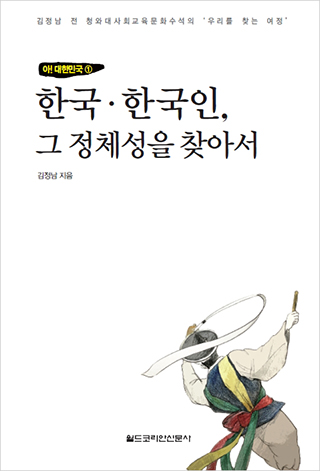By Jeongnam Kim
(Former Senior Presidential Secretary for Education·Culture·Society, World Korean News advisor)

"Anyone who visited that place wants to settle down there; they do not want to leave that place, for it is very rich and replete with many a useful things. Of them all, gold is aplenty, and the people living in this place make necklaces for dogs and apes with gold."(Jeong Su-il, Islam Culture) Surprisingly enough, this place, referred to by an Arab geographer, turns out to be Silla.
Recently, discussions about the cultural commonality as well as an exchange of Silla with Rome are getting brisk. The argument that Gyeongju is the eastern end of the east-west cultural exchange and at the same time the starting point of exchanges with the West is getting gradually more persuasive. The Silk-road Project of the North Gyeongsang Province got started in 2013 based on this idea.
The golden crowns with the images of tree leaves and some of the glass products are representative relics. The twenty-two pieces of relics with their excavation sites confirmed so far are all excavated from old tombs of Silla's 9th Period, and based on the materials and techniques, decorative images, and colors, the representative relics are presumed to be related to the glass products of the latter period of Rome. The decorative sword excavated from the 14th Tomb of King Michu is also presumed to have been imported from Rome.
One of the world atlas drawn by Aldrich (phonetic) shows Silla as a group of islands off the southeast coast of China. This means that Silla was known widely prior to this period amongst the Arab people. Three hundred years before this, an Arab salesman named Sulaiman (phonetic), in his travelogue titled "News of China and India" (851) which introduced Silla in Arabic also indicated that Silla was a island off the southeastern shore of China,
However, it was in the period of Goryeo Dynasty when the location of the Korean peninsula and the name of our country began to be known more clearly and widely. Goryeo made its name known highly to the world through its maritime management and overseas exchanges. Thus the name "Korea (or Goryeo) got deeply buried in the minds of the Westerners from the early days of the Goryeo period.
Korea was first known to the Westerners when Rubric, who was sent to Won China by Louis the 9th of France, made a mention of "an island called Kaule" in his travelogue. A Franciscan friar, he wrote in Latin "A Travelogue of the Mongol Empire" when he returned home from his trip to Won China where he attended an enthronement ceremonies for King Hunjong.
In this book, Korea was introduced as a 'Kaule,' which was a typo of Gaori, an alphabetical rendering of Chinese phonetic 'Gaori.' "The Travel of Marco Polo," which came out 40 years later, referred to Korea as "Kauli. Later Persia's historical Lacidadin (phonetic), in his "Collection of History' (1307-1311) called Korea as "Kaoli," from which the name 'Korea' was known to the Western world.
Korea's transcriptions changed from kaole. to kaoli, and then to Korea eventually as it is known today. It is analyzed that Korea was composed from Kore and a, the ending a being attached as a designation for a country or a land. In his travelogue, Russian explorer N.M Prezevilsky (phonetic), in his "Travel to Usury region" (1867 - 1869). he wrote that the people of Joseon called themselves as Kauli.


